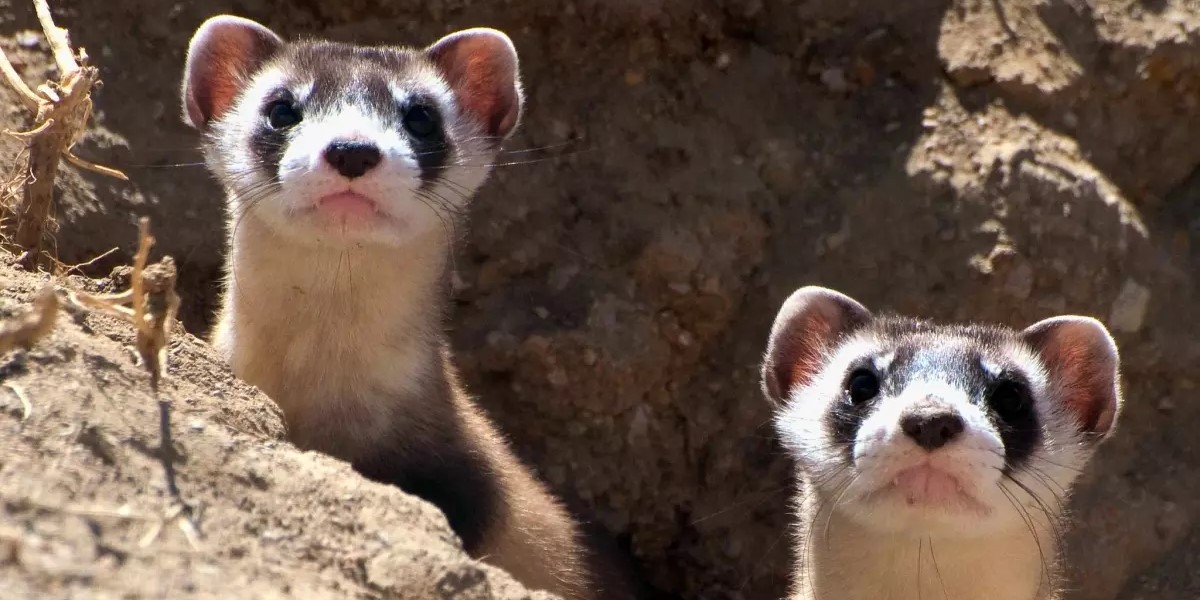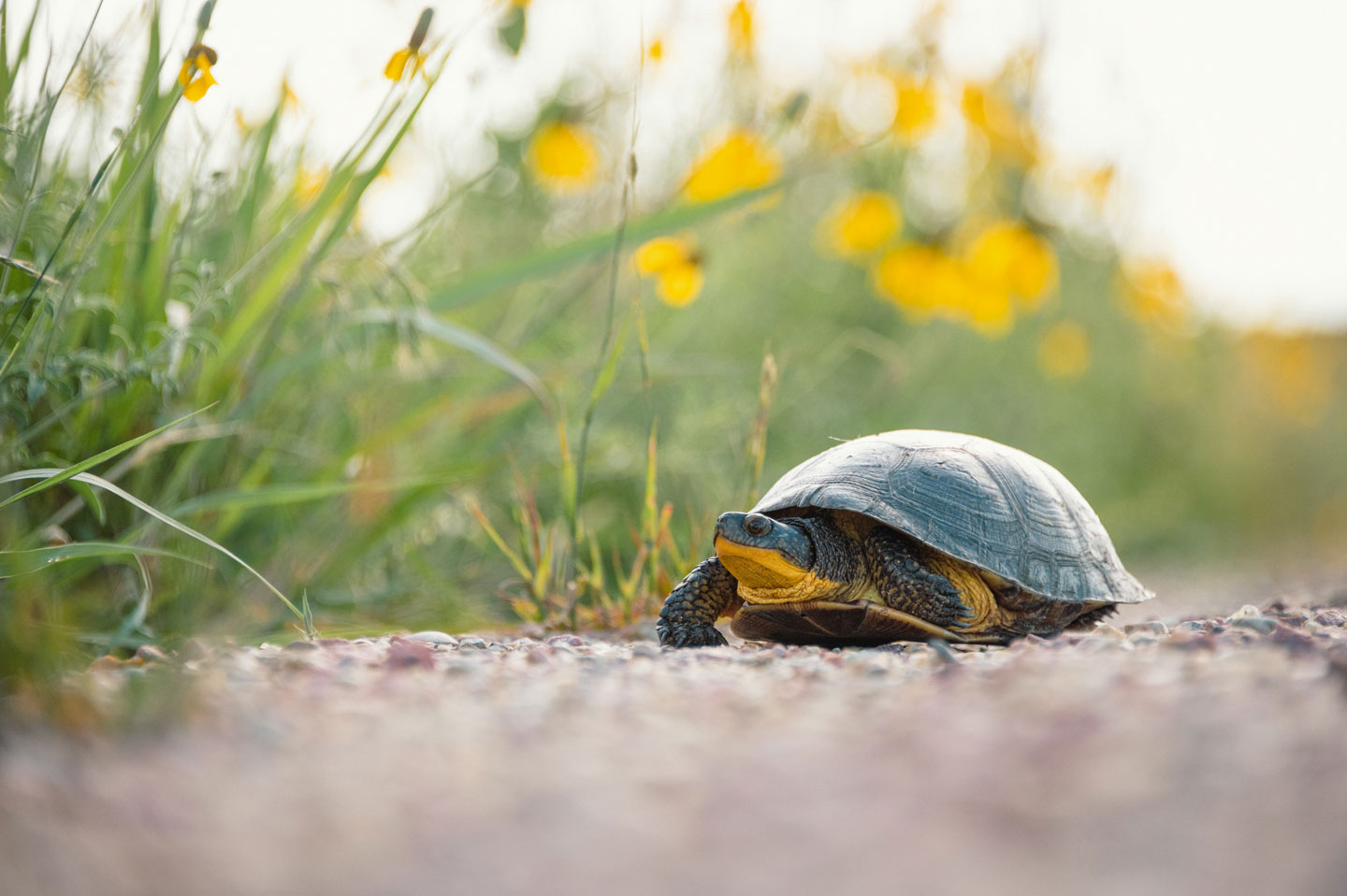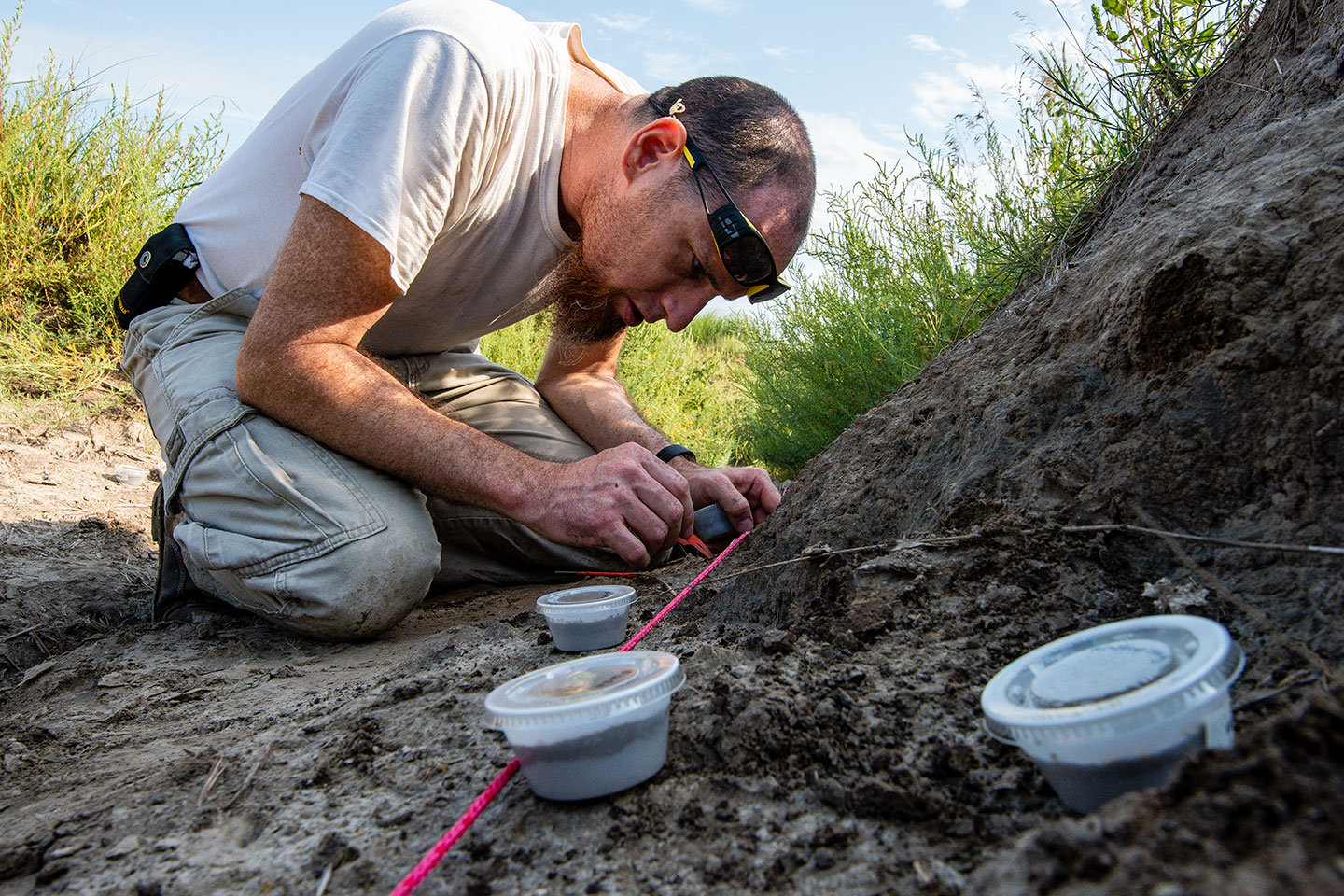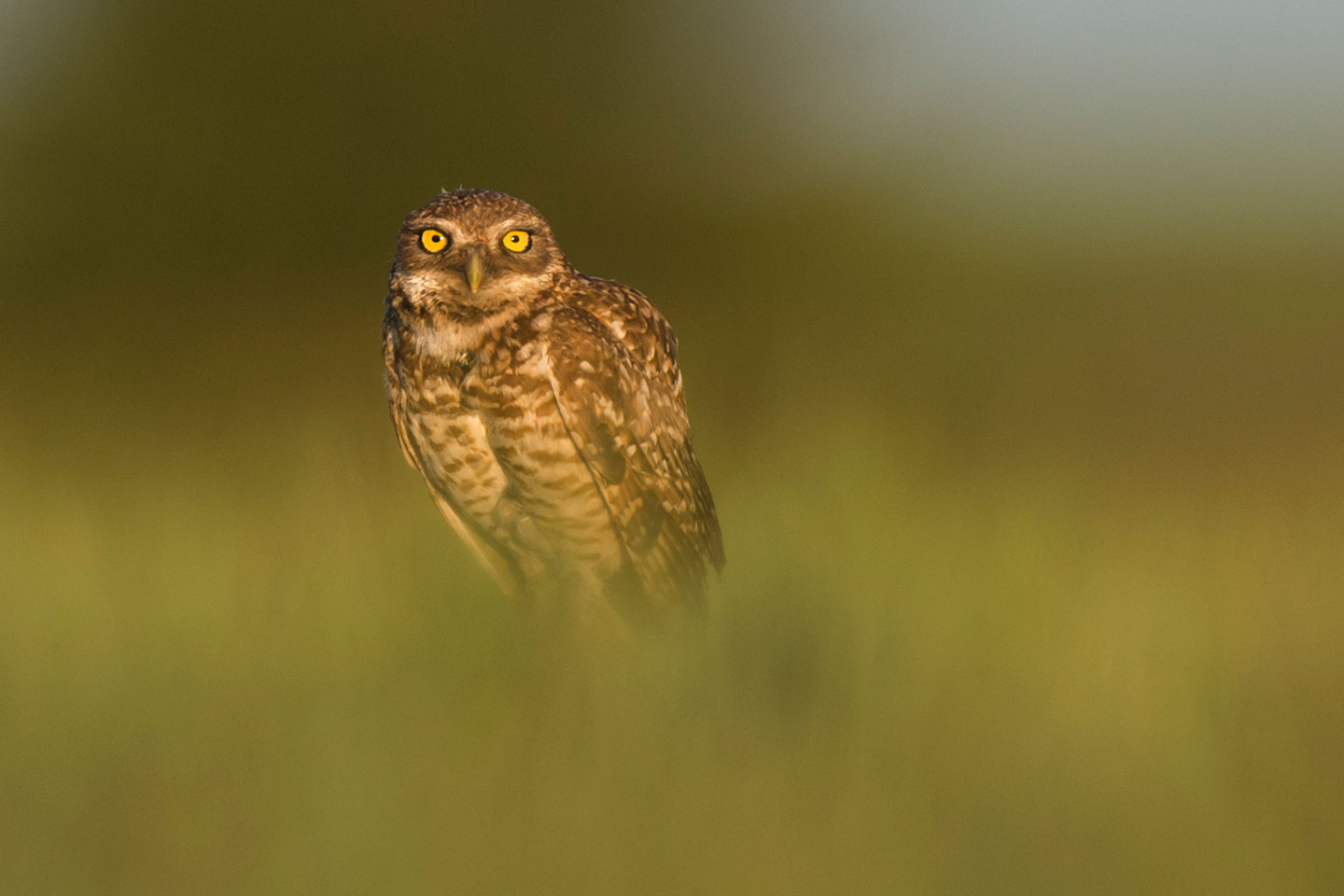Black-footed ferret
Status: Endangered

Identification
The body of the black-footed ferret (Mustela nigripes) is a solid pale yellowish-tan color. Contrasting sharply, is its black legs and feet. The specie’s common and scientific name (negra = black, pes = foot) reflect this coloration. It is also easily identified by its white muzzle, cheeks and throat with a black “mask” around the eyes. It has overdeveloped front legs designed for digging and catching prey.
The black-footed ferret is a member of the mustelid family and as such is related to weasels, minks, otters and badgers. Of this large carnivore family, the black-footed ferret is a medium sized species reaching lengths of 19-24 inches. It weighs 1.4-2.5 pounds.
Relative to its overall size, this species has fairly large ears and eyes indicative of its acute hearing and eyesight. That said, it is believed its sense of smell is most critical for hunting underground in the dark.
The black-footed ferret is the only wild species of ferret in North America.
The species is extremely vocal. Loud chattering indicates danger or alarm whereas a hiss indicates anger or fear. Females often whimper to young and males will call to females during mating season.
Range
Historically, the black-footed ferret was found throughout the prairies of the central United State from Canada to Mexico.
All native populations in Nebraska were extirpated and ferrets only remained in a small population in Wyoming. Today, three distinct populations exist: northeastern Montana, western South Dakota and southeastern Wyoming. All three populations were reintroduced using individuals from zoos and breeding facilities.
There are no known populations of black-footed ferrets in Nebraska. Because Nebraska was part of the historical range and because the state does have suitable habitat, the black-footed ferret is listed as an Endangered species in Nebraska (both federal and state).
Diet
The large head, strong jaws and sharp teeth of the black-footed ferret are necessary for this fierce predator. Its diet is almost entirely made up of prairie dogs.
Habitat
The black-footed ferret inhabits the burrows of prairie dogs. These deep, long system of tunnels provide the black-footed ferret with not only a safe place to escape predators and raise young, but also a source of food. Black-footed ferrets can be seen peeking their head out of the burrow entrance.
Although black-footed ferrets are voracious predators, they too are prey species. Predators of the black-footed ferret include eagles, owls and coyotes. Black-footed ferrets also fall to disease including sylvatic plague.
Reproduction
Black-footed ferrets are solitary animals coming together only for mating. Breeding occurs in March and April. With a gestation period of approximately 41 days, kits are born in May and June. Litters most often contain 3-4 kits, but occasionally a kit of as few as one and as many as nine have been recorded.
Kits are born blind and helpless. The female cares for the young by herself. Kits remain underground in the burrow for two months at which point the mother moves kits to a new burrow and begins to teach hunting and survival skills. At 90 days, kits are nearly their adult size and avid hunters. By September, kits are fully independent.
Black-footed ferrets are sexually mature at one year old but their peak reproduction capabilities does not occur until 3-4 years of age.
Population status
While the use of prairie dog burrows provided the black-footed ferret refuge in the past, it has also help lead to its decline. Prairie dogs and their towns are often seen as nuisances to rangers and landowners. The holes created by prairie dogs were believed to be a threat to wandering livestock. Additionally, prairie dogs eat grass and thus can be viewed as competitors of cattle in range land. Because of all of this, prairie dogs have been killed in large numbers.
Human destruction of habitat in addition to extensive disease among prairie dogs have caused populations of prairie dogs to plummet. Because black-footed ferrets rely heavily on prairie dog communities for both habitat and food, the plummet of prairie dog numbers has also lead to the fall of the black-footed ferret. Conversion of open prairies to cropland have further impacted both black-footed ferrets and prairie dogs.
Additionally, black-footed ferrets have been widely impacted by diseases such as sylvatic plague.
Once numbering in the tens of thousands across their range, the black-footed ferret was officially listed on the federal Endangered species list in March 1967. It was believed to be extinct by the late 1970’s.
However, a small population was discovered in Meeteetse, Wyoming in 1981. This small population was reduced further by disease; by 1986, only eighteen individuals remained. These eighteen individuals were captured and formed the basis for the breeding and reintroduction efforts that continue today.
Management and outlook
Although the population of black-footed ferrets was reduced to only eighteen individuals, most conservation biologists believe a full recovery is possible. A breeding facility in Colorado raised ferrets to be released into the wild. Since its inception in 1985, the U.S. Fish and Wildlife’s breeding program has produced over 8,000 kits. Furthermore, this program has released over 4,000 ferrets at 24 sites across the species historic range. Of these 24 sties, only 4 are considered self-sustaining populations.
Continuing the breeding and release program is critical for the recovery of this species. Additionally, management of the re-introduced populations is important to ensure populations are sustained in the wild.
Conservation help
Individuals wanting to help conserve this species can consider monetary donations to conservation organizations who work and research black-footed ferrets. Additionally, individuals can take time to learn about Black-footed ferrets (and all Threatened and Endangered species) and share their knowledge with others.
References
AZA-Accredited Facilities Assist in Historic Reintroduction of Black-footed Ferrets to Natural Range. Association of Zoos and Aquariums. August 3, 2016.
https://www.aza.org/aza-news-releases/posts/black-footed-ferret
Black-footed Ferret Fact Sheet. U.S. Fish and Wildlife Service. October 2015.
Belant, J., Biggins, D., Garelle, D., Griebel, R.G. & Hughes, J.P. 2015. Mustela nigripes. The IUCN Red List of Threatened Species 2015: e.T14020A45200314. http://dx.doi.org/10.2305/IUCN.UK.2015-4.RLTS.T14020A45200314.en. Downloaded on 08 December 2017.
Black-footed Ferret. Smithsonian’s National Zoo and Conservation Biology Institute.





